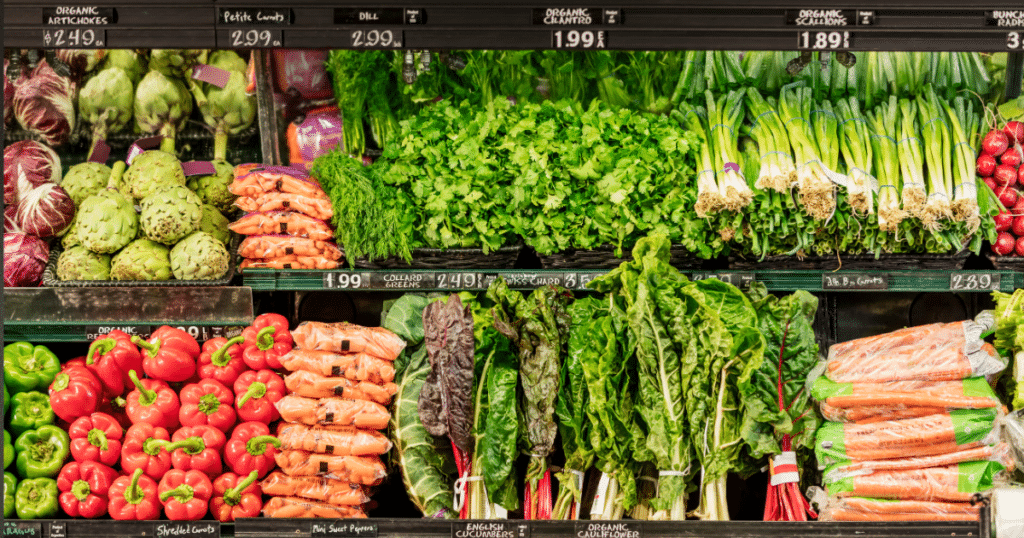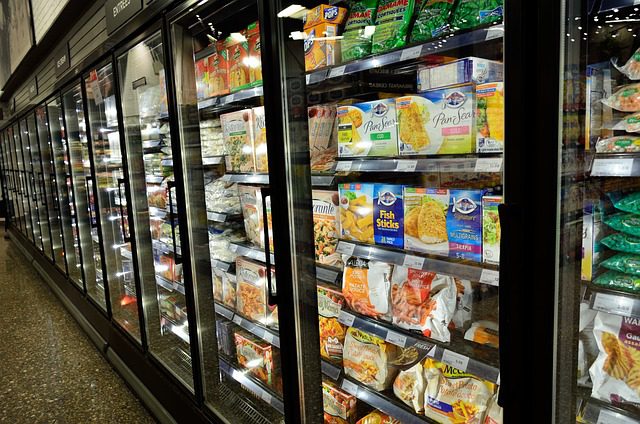8 Tips to Make Smarter Buying Decisions at the Grocery Store
How many times have you gone to the grocery store only to come home with an insane amount of food you had no intention of buying? You walk through the grocery store doors with the intent to make better buying decisions at the grocery store, but the wheels fall off. I’ve been there too. And I vowed never to allow it to happen again (who am I kidding, it happened again — those donuts look so good, right?).
We’re not perfect, and there will be times when we fail. But the key is to realize you messed up and work towards improving so it doesn’t happen again. The goal we are trying to achieve with this article is to minimize mistakes and make better buying decisions at the grocery store.
Related Article: Are Chicken Farms Fooling You About the Chicken Quality?
In order for that to happen, we need to first understand some tips and tactics you should consider utilizing to make it a successful shopping trip.
Below you will find a list of eight tips to make better buying decisions at the grocery store. They can all help you stay on track not only with what you need at the grocery store but also help you stay on track to achieve your health and fitness goes.
Disclaimer: This article is for informational purposes only and is not meant to treat or diagnose any condition. It is recommended that you speak with your doctor before starting any exercise program, changing your daily nutrition, or adding any supplements to your regimen.
Table of contents
- 8 Strategies to Make Better Choices at the Grocery Store
- 1. Make an actual grocery list
- 2. Never shop at the grocery store when hungry
- 3. The bulk of purchases should be from the outer perimeter
- 4. Buy frozen when you can’t get fresh
- 5. Choose plain flavors and add your own flavoring
- 6. Read the label and ingredients, not the front of the box
- 7. Fresh and lean is always your best choice
- 8. Fewer ingredients are generally always a healthier option at the grocery store

8 Strategies to Make Better Choices at the Grocery Store
Try the strategies below if you want to make healthier choices while shopping at the grocery store.
1. Make an actual grocery list
As they say, “You don’t know what you don’t know.” How are you supposed to buy what you need at the grocery store if you don’t have a plan? Let me guess, it goes something like this… You walk up and down each aisle, and whatever looks good or you’re hungry for, you toss in your cart. Right? That’s a terrible plan.
Related Article: Is Online Grocery Shopping Going to Be Our New Normal?
What you need to do is make a list before you go to the store. What’s on your list needs to go in your cart, things not on your list need to stay out. Can we agree on that? Easier said than done, but you need to show some restraint.
2. Never shop at the grocery store when hungry
I’ve done this. You’ve done this. We’ve all done this. And the end result is gluttony and a whole lot of regret. When you’re hungry, EVERYTHING looks good, and temptation gets the best of us. In order to make better buying decisions at the grocery store, not only do you need some restraint but also a full stomach before shopping.
Eat a meal or a snack before heading to the store, and it will help cut back on your eyes being the size of saucers as soon as you walk in the door at the grocery store.
3. The bulk of purchases should be from the outer perimeter
Think for just a second about everything you would find on the outer perimeter of the grocery store. You’ll find fruit, vegetables, lean protein such as chicken, beef, and fish, milk, yogurt, and eggs. All of which are extremely healthy options that you should be considering when looking to make better buying decisions at the grocery store.

Most of what you find in the aisles will be processed items — think of things like cereal, candy, pre-packaged products, etc. Now, there are some great options to consider in the middle aisles. Items like natural nut butter, whole nuts, water, unsweetened tea, and rice, to name some examples.
Related Article: Eating Healthy on a Budget Isn’t Truly That Difficult
The bulk of what you purchase at the grocery store should be from the outer perimeter, with a few items (they will generally be sources of carbohydrates) from the aisles.
4. Buy frozen when you can’t get fresh
If you have the ability to purchase things such as fresh produce while it’s in season, that would be ideal. However, we also know that as the seasons change, so does the availability of fresh produce. When items you want aren’t in season, go for the frozen variety.
Related Article: 10 Strategies to Save Money Grocery Shopping
Frozen vegetables and fruit make for quick and easy carb sources when you need something quick but don’t have anything fresh from the grocery store.

If you have problems getting enough fruit or vegetables from your diet, consider keeping the frozen variety on hand at home for your protein shakes. Put the frozen items in a blender with your favorite protein powder and some water, and you have some amazing micronutrients included in your shake.
5. Choose plain flavors and add your own flavoring
When you buy anything that doesn’t taste like its natural flavor, it will generally have some added calories. This can come in the form of various sauces, juice, oils, etc.
Related Article: How to Properly Grocery Shop to Improve Your Recomp Results
In order to make better buying decisions at the grocery store, buy everything plain. When you get home and prepare your meals, at that point, feel free to use various seasonings and herbs in your dishes to add some flavor without all of the unnecessary added calories from pre-made versions.
6. Read the label and ingredients, not the front of the box
The purpose of the front of the box is to grab your attention with flashy images, fonts, and call-outs. Unfortunately, not all of the call-outs on the box are legitimate. The label may say something like low in sugar, but what they did was increase the fats in order to make things taste better. So, while you’re getting a product lower in sugar, they simply swapped it out with more of something else to improve the flavor profile.
Related Article: The Dangers of Eating Processed Food Instead of Real Food
If you want to make better buying decisions, you need to become familiar with the back panel, where you can read the label and all of the ingredients found in the product. That area will provide you with the information necessary to determine if it’s truly a good (healthy) option or not.
7. Fresh and lean is always your best choice
When looking to make better buying decisions at the grocery store, you’re going to want to purchase the freshest and leanest products you can. Yes, you may pay a little bit more for the items, but the overall quality of your meal will be better.

For instance, get chicken without the skin on it. Buy your meat with less fat throughout the cut. And it should go without saying, but look at all the dates on the items you are considering and find the one with the best dating, which would mean it’s the freshest of the bunch.
8. Fewer ingredients are generally always a healthier option at the grocery store
When was the last time you took a peek at the ingredient list on a pre-packaged product you bought from the grocery store? If you haven’t lately, go take a look. There is stuff in there I’m not quite sure any of us can pronounce. Generally speaking, those things are all preservatives that, for health reasons, we shouldn’t be consuming anyway.
Related Article: Don’t Be Fooled By These 5 Food Packaging Tricks
The things you purchase, if they are healthy for you, should come with minimal ingredients. I’m talking about a handful or less. Things should be kept as natural as possible, and when you notice the kitchen sink is included with the ingredients, it’s time to put it back on the shelf and look for a healthier alternative.
With the list of tips mentioned in this article, you should be on your way and be able to make better buying decisions at the grocery store. Good luck! And remember, don’t go grocery shopping when you’re hungry!


*Disclosure: This article may contain affiliate links or ads, which means we earn a small commission at no extra cost to you if you make a purchase through these links. These commissions help support the operation and maintenance of our website, allowing us to continue producing free valuable content. Your support is genuinely appreciated, whether you choose to use our links or not. Thank you for being a part of our community and enjoying our content.
PLEASE CONSIDER SHARING THIS ON YOUR SOCIAL MEDIA TO HELP OTHERS LEARN MORE ABOUT THIS TOPIC.





